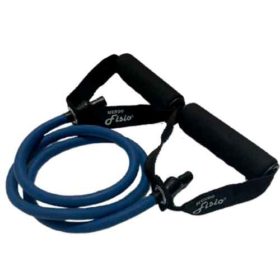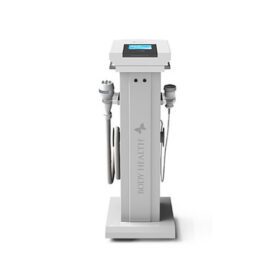Encontre o que precisa com preço baixo, pagamento facilitado no Cartão, Pix ou Bitcoin | Financie em até 48x | (62) 3999-1263 - (62) 99497-9204
Mastering Micro-Targeting: Deep Strategies for Niche Audience Engagement
Effective micro-targeting in niche markets requires a precise, data-driven approach that goes beyond basic segmentation. This guide delves into advanced techniques and actionable steps to implement micro-targeting strategies that resonate deeply with highly specific audiences. Building on the broader context of «{tier2_theme}», and foundational principles from «{tier1_theme}», we explore concrete methods to refine targeting, craft hyper-localized messages, and optimize campaign performance for maximum relevance and ROI.
1. Identifying Precise Micro-Targeting Data Sources for Niche Audiences
a) Utilizing Advanced Data Analytics Tools (e.g., AI-driven segmentation platforms)
To achieve granular audience segmentation, leverage AI-powered platforms such as Segment, Hunch, or Amperity. These tools analyze customer behaviors, preferences, and contextual signals to generate micro-segments with high precision. For example, use clustering algorithms like K-Means on purchase history, website interactions, and social media activity to identify subgroups that share nuanced traits.
| Data Source Type | Specific Techniques | Actionable Example |
|---|---|---|
| AI-Driven Segmentation Platforms | Customer clustering, predictive scoring | Segmenting eco-conscious urban dwellers based on online behavior and purchase data |
| Predictive Analytics | Forecasting future behaviors | Identifying likely repeat buyers in niche categories |
b) Leveraging Social Media Listening and Sentiment Analysis for Niche Insights
Utilize tools like Brandwatch, Sprout Social, or Crimson Hexagon to monitor niche-specific conversations, hashtags, and sentiment trends. For example, track discussions around specialized hobbies like urban beekeeping or vegan pet foods to uncover emerging needs and preferences. Apply topic modeling and sentiment scoring to detect subtle shifts in attitudes that inform tailored messaging.
| Listening Technique | Implementation Detail | Example |
|---|---|---|
| Hashtag Monitoring | Identify niche hashtags; analyze volume and sentiment | Tracking #UrbanBeekeepers in local markets |
| Sentiment Analysis | Use NLP tools to gauge emotional tone | Understanding frustration points among niche pet owners |
c) Incorporating Offline Data (e.g., local events, community surveys) for Granular Profiling
Combine online insights with offline data collection to enrich audience profiles. Conduct community surveys, attend local events, or partner with neighborhood organizations to gather context-specific data. For instance, a niche organic food store might host sampling events and record attendee preferences, dietary restrictions, and shopping habits, integrating this data into your CRM for hyper-targeted outreach.
- Design survey questionnaires that probe specific interests and behaviors
- Utilize local event feedback forms to gather qualitative data
- Map offline engagement data with digital profiles for comprehensive segmentation
2. Developing Hyper-Localized Messaging Strategies
a) Crafting Customized Content Based on Micro-Segment Preferences
Create tailored messaging that directly addresses the unique interests and pain points of each micro-segment. For example, for environmentally conscious urban gardeners, highlight sustainable sourcing, local farm partnerships, and eco-friendly packaging. Use language, visuals, and offers that resonate specifically with their values, avoiding generic messaging.
Expert Tip: Use customer archetypes derived from your data analysis to craft personas that guide content creation for each micro-segment, ensuring relevance and emotional connection.
b) Designing Dynamic Content Delivery Systems (e.g., geofenced ads, personalized email campaigns)
Implement geofencing technology in platforms like Facebook and Google Ads to serve highly localized ads when users are within specific geographic boundaries. For email campaigns, utilize dynamic content blocks that adapt based on recipient data—showing different product recommendations, store hours, or event invitations aligned with their micro-profile. Use tools like Mailchimp’s dynamic content or HubSpot’s smart content to automate this process.
c) A/B Testing Different Messaging Variations for Niche Audience Segments
Design controlled experiments to test message variations. For example, test two headlines: “Support Local Organic Farmers” vs. “Fresh, Local, Organic — Delivered to Your Neighborhood.” Use platforms like Google Optimize or Facebook Experiments to measure engagement, click-through rates, and conversions. Iteratively refine based on data to maximize relevance and response rates.
3. Technical Implementation of Micro-Targeting Tactics
a) Setting Up and Configuring Audience Segmentation in Ad Platforms (e.g., Facebook Ads, Google Ads)
Start by defining detailed audience parameters in your ad platform. For Facebook Ads, create Custom Audiences based on pixel data, app activity, or engagement with specific posts. Use Audience Insights to narrow down criteria such as interests, behaviors, and demographics that reflect your micro-segments. For Google Ads, leverage Customer Match and in-market segments, layering location and device filters for hyper-specific targeting.
| Platform | Configuration Steps | Key Tips |
|---|---|---|
| Facebook Ads | Create Custom Audiences; Use Lookalike Audiences; Layer interests and behaviors | Exclude broad audiences to prevent audience fatigue |
| Google Ads | Set up Customer Match, use in-market and affinity segments, apply location filters | Combine with device-specific targeting for best results |
b) Integrating CRM and Data Management Platforms (DMPs) for Real-Time Audience Updates
Connect your CRM (e.g., Salesforce, HubSpot) with DMPs like Lotame or Adobe Audience Manager to synchronize customer data continuously. Use APIs to feed behavioral updates, purchase history, and offline interactions into your DMP, enabling dynamic audience refreshes. This setup allows for real-time bid adjustments and personalized ad serving, ensuring your micro-targeting stays current and relevant.
c) Automating Campaign Adjustments Based on Audience Behavior and Feedback
Implement automation tools like Google Campaign Manager or Facebook Automated Rules to modify bids, pause underperforming segments, or rotate creative assets based on real-time performance data. Set thresholds—for example, if click-through rate (CTR) drops below a certain level, automatically switch to a different message or increase bid adjustments. Use machine learning models to predict optimal adjustments, reducing manual oversight and improving responsiveness.
4. Enhancing Micro-Targeting Through Behavioral and Contextual Signals
a) Tracking User Behavior with Pixel and Event Tracking Technologies
Implement Facebook Pixel, Google Tag Manager, or LinkedIn Insight Tag on your website to capture user actions such as page views, button clicks, and form submissions. Define custom events for micro-actions relevant to your niche. For example, track downloads of niche-specific guides or engagement with product videos, then segment users based on these behaviors for highly targeted retargeting campaigns.
Expert Tip: Use event data to build Lookalike Audiences on Facebook, or Similar Audiences on Google, based on high-value behaviors within your niche.
b) Employing Contextual Targeting Based on Environment and Device Data
Leverage device type, operating system, time of day, and environmental context to serve relevant ads. For instance, target mobile users during commuting hours with quick, location-specific offers for local niche businesses. Use contextual signals such as weather data—promoting hot beverages on cold days or outdoor gear during sunny weekends—to increase ad relevance and engagement.
c) Using Lookalike and Similar Audience Models to Expand Reach Within Niche Segments
Create Lookalike audiences based on your highest-converting niche customers. Use seed lists from your CRM or pixel data. Fine-tune similarity thresholds—e.g., 1% for highly similar audiences, 5% for broader reach. Regularly refresh these audiences to incorporate new high-value users and prevent audience fatigue.
5. Avoiding Common Pitfalls and Ensuring Ethical Micro-Targeting
a) Recognizing and Mitigating Data Privacy Risks and Compliance Issues (e.g., GDPR, CCPA)
Maintain transparency by informing users about data collection and usage. Use consent management platforms like OneTrust or TrustArc to ensure compliance. Limit micro-targeting based on sensitive categories—such as health, ethnicity, or political beliefs—to avoid legal issues and negative brand perception.
b) Preventing Over-Segmentation that Leads to Audience Exhaustion
Avoid creating too many micro-segments, which can cause ad fatigue and increased costs. Regularly review performance metrics to identify segments with diminishing returns. Consolidate overlapping segments and rotate creative assets to maintain freshness.




